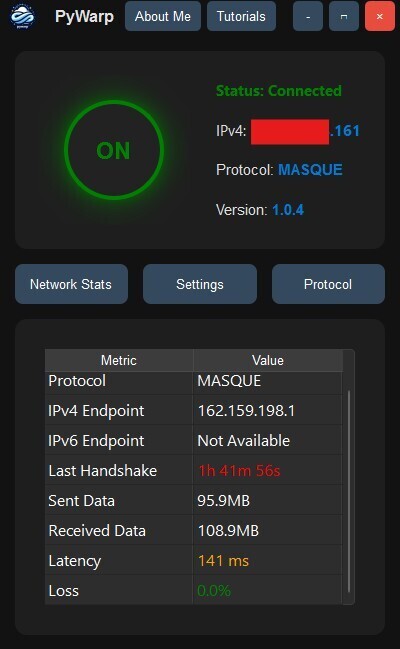How to Build a Security Champions Program Within Your Organization
In today’s hyper-connected world, cybersecurity is no longer the sole responsibility of a dedicated security team. As organizations scale and technology becomes increasingly integrated into every aspect of business, the risks and attack surfaces multiply. Yet, security teams are often outnumbered by developers, engineers, and business units, making it nearly impossible for them to monitor […] The post How to Build a Security Champions Program Within Your Organization appeared first on Cyber Security News.
.webp?#)
In today’s hyper-connected world, cybersecurity is no longer the sole responsibility of a dedicated security team. As organizations scale and technology becomes increasingly integrated into every aspect of business, the risks and attack surfaces multiply.
Yet, security teams are often outnumbered by developers, engineers, and business units, making it nearly impossible for them to monitor every line of code, configuration, or process.
To address this challenge, forward-thinking organizations are turning to Security Champions Programs.
These programs empower passionate individuals across departments to act as security advocates, embedding security practices into daily workflows and fostering a culture of shared responsibility.
By building a Security Champions Program, organizations can bridge the gap between security and business, enhance awareness, and create a resilient, proactive defense against evolving threats.
This article explores the steps to create a successful Security Champions Program, the critical elements for launch, and strategies for long-term sustainability.
Identifying and Empowering Security Champions
The foundation of a successful Security Champions Program lies in selecting the right individuals and giving them the tools to thrive.
Security champions are not necessarily security professionals; they are enthusiastic, respected members of their respective teams whether in development, QA, product management, or operations who demonstrate a genuine interest in security.
The process begins with identifying these potential champions through nominations, volunteering, or performance in security-related activities. Once selected, it’s crucial to provide them with specialized training, resources, and direct access to the security team.
Empowerment also means granting them the authority to influence decisions, review processes, and escalate concerns without bureaucratic friction.
Recognition is equally important; publicly acknowledging their contributions and integrating their feedback into security policies boosts morale and reinforces their role.
By embedding champions throughout the organization, you create a network of trusted security advocates who can raise awareness, share knowledge, and drive secure behaviors at the grassroots level, making security a shared value rather than a siloed function.
Launching a Security Champions Program is a strategic initiative that requires careful planning, execution, and ongoing support. Here are five essential steps to ensure a strong and sustainable launch:
- Define Clear Objectives: Articulate what you want to achieve, whether it’s reducing vulnerabilities, increasing security awareness, improving secure coding practices, or accelerating incident response. Clear goals provide direction and help measure success.
- Secure Executive Buy-In: Gain visible support from leadership. When executives champion the program, it signals its importance, ensures adequate funding, and encourages participation across the organization.
- Develop Comprehensive Training and Resources: Equip champions with tailored training, current threat intelligence, and practical resources. Ongoing education keeps them informed and effective in their advocacy.
- Foster Community and Collaboration: Create forums, chat channels, and regular meetings where champions can share experiences, discuss challenges, and collaborate on solutions. This sense of community strengthens engagement and knowledge sharing.
- Recognize and Reward Contributions: Celebrate achievements through awards, certifications, or professional development opportunities. Recognition keeps champions motivated and highlights the program’s value to the wider organization.
Establishing these steps is not a one-time effort but an ongoing process. Regular feedback, adaptation to new threats, and continuous improvement are essential.
By investing in onboarding, training, and open communication, organizations ensure their security champions remain engaged and effective, evolving alongside the business and the threat landscape.
Growing the Security Champions Program
Sustaining a Security Champions Program requires more than initial enthusiasm; it demands ongoing investment, adaptability, and a commitment to continuous improvement.
As the program matures, maintaining engagement is crucial. Regular check-ins, advanced training, and opportunities for champions to participate in incident reviews or policy updates help keep the role meaningful and dynamic.
Encourage champions to attend security conferences, lead internal workshops, or mentor new champions, broadening their expertise and influence.
Measuring program impact is equally essential to track metrics such as reduced vulnerabilities, faster incident response times, or increased security-related contributions from non-security teams.
Use these insights to refine the program, address challenges, and demonstrate value to leadership.
- Organize cross-team security hackathons or workshops, enabling champions to collaborate on real-world security challenges and share innovative solutions.
- Rotate champions periodically or introduce a mentorship model to prevent burnout, foster fresh perspectives, and cultivate new advocates across various departments.
Ultimately, a thriving Security Champions Program transforms security from a reactive, centralized function into a proactive, organization-wide mindset. Champions become trusted advisors, integrating security into daily operations and decision-making.
This cultural shift reduces risk, accelerates secure development, and confidently empowers teams to innovate.
By nurturing and expanding the program, organizations build a resilient security culture that adapts to change, fosters continuous learning, and positions security as a strategic business enabler.
The result is not just stronger defenses, but a workforce that sees security as everyone’s responsibility driving long-term resilience and success in an ever-evolving threat landscape.
Find this News Interesting! Follow us on Google News, LinkedIn, & X to Get Instant Updates!
The post How to Build a Security Champions Program Within Your Organization appeared first on Cyber Security News.



































































![Apple Watch Series 10 Back On Sale for $299! [Lowest Price Ever]](https://www.iclarified.com/images/news/96657/96657/96657-640.jpg)
![Apple Slips to Fifth in China's Smartphone Market with 9% Decline [Report]](https://www.iclarified.com/images/news/97065/97065/97065-640.jpg)
![EU Postpones Apple App Store Fines Amid Tariff Negotiations [Report]](https://www.iclarified.com/images/news/97068/97068/97068-640.jpg)














![What’s new in Android’s April 2025 Google System Updates [U: 4/18]](https://i0.wp.com/9to5google.com/wp-content/uploads/sites/4/2025/01/google-play-services-3.jpg?resize=1200%2C628&quality=82&strip=all&ssl=1)



























































































_Andreas_Prott_Alamy.jpg?width=1280&auto=webp&quality=80&disable=upscale#)





















































































![[The AI Show Episode 144]: ChatGPT’s New Memory, Shopify CEO’s Leaked “AI First” Memo, Google Cloud Next Releases, o3 and o4-mini Coming Soon & Llama 4’s Rocky Launch](https://www.marketingaiinstitute.com/hubfs/ep%20144%20cover.png)












































































































































![[FREE EBOOKS] Machine Learning Hero, AI-Assisted Programming for Web and Machine Learning & Four More Best Selling Titles](https://www.javacodegeeks.com/wp-content/uploads/2012/12/jcg-logo.jpg)






























































































